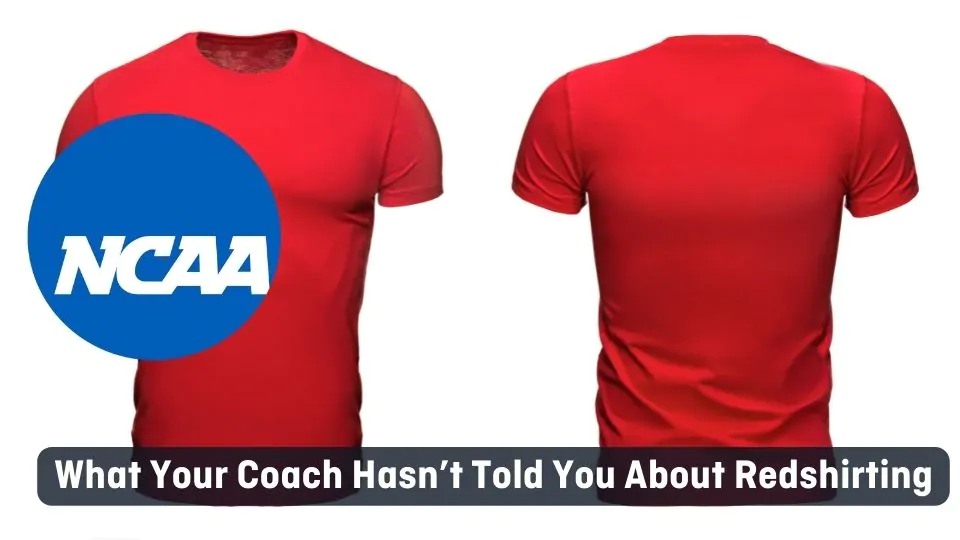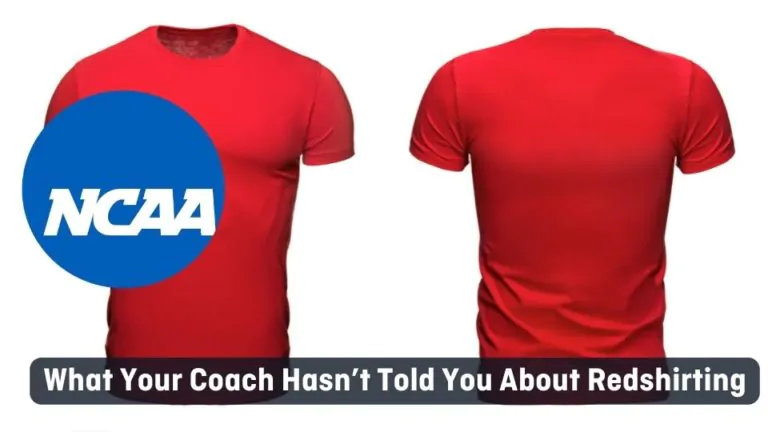After who knows how many college visits and coach emails, you finally did it: you have been recruited. As you prepare for your freshman year of college, you may be questioning whether or not you are ready to balance collegiate athletics with academics and all other aspects of the college experience. There may be talk of redshirting your freshman year and the term is familiar, but what does it mean and does it apply to you?
Like many other things, redshirting has its pros and cons, but it is incredibly circumstantial to the student-athlete considering it. Athletes decide to redshirt from physical necessity, strategic reasoning, and academic requirements. But what are the benefits and drawbacks to each?
Related: Redshirt | An Athletes Experience with being a Two-year Red Shirt, Transfer, and a Medical DQ
First, by redshirting, a student-athlete has the opportunity to physically and mentally mature. The year taken off allows an athlete to grow stronger, add weight, and improve their skills. There is the chance to maximize strength and talent for their first season officially on the team.
While improving one's physical capabilities, this year off also allows the student-athlete to better understand the team's dynamic, the coach's playbook, and the ins and outs of the specific team. While improving one's abilities, the student-athlete can also understand the expectations he or she needs to meet and exceed, but also the goals that need to be set once they begin competing.
While some athletes may need time off for themselves, there are circumstances in which it is best to redshirt not out of personal necessity, but as a strategic decision.
For example, in some situations, a team will have too many players for one particular position. In this case, at least one of the players will be stuck on the back burner and spending a season on the bench. Instead of wasting a year of eligibility, some student-athletes can take the opportunity to redshirt.
Different circumstances lead to a redshirt while at school. In the worst case scenario, an athlete will sustain an injury, be diagnosed with a serious medical condition, or require long term recovery. In these scenarios, the NCAA grants a redshirt for medical reasons. While the medical redshirt is granted for a season-ending injury, the timing is critical. If the athlete has already played more than 30% of their games or matches, the student loses eligibility for the redshirt.
In addition to physical reasoning, redshirting allows athletes to adjust to college life mentally. With less pressure to simultaneously acclimate to collegiate athletics and academics, college athletes can get settled into life on campus and get more involved in other areas before committing fully to the sport. While redshirts cannot compete like their teammates, they are still able to work with the team and get to know the other members while becoming more comfortable at their new school. This relaxed year allows freshman student-athletes to better balance the other demands from college like academics and general adjustments without adding an additional stressor of competing.
Related: How Does the NCAA Medical Redshirt Work?
Prospective student-athletes can also take on the academic redshirt. With strict admissions requirements from the NCAA, a student-athlete who meets the college's academic admission requirements, but does not meet the NCAA's required 2.3 GPA may attend the school as an academic redshirt. This means the athlete may practice with the team and gain a scholarship. However, they must complete the necessary credit hours and meet NCAA academic standards in college.
While there are certainly many reasons to redshirt, there are also several drawbacks and reasons not to take the year off.
If a student-athlete plans on graduating in four years, he or she loses a season if they redshirt for a year. This serves as a con as the athlete does not maximize all four years of eligibility. But Todd Berry, the executive director of the American Football Coaches Association, believes that allowing redshirt players to play in up to four games would be beneficial and keep players engaged. However, he notes “every data point the NCAA has shown us states that the redshirt year is the most difficult for the student-athlete. They're doing a lot of work, and there is no immediate payoff.”
Going off that point, another con to the redshirt is the lack of full involvement. While the redshirt allows student-athletes to branch out and experience other parts of the college experience, redshirt athletes don't always feel like they're part of the team. While the next year of competition could make up for this, it is something to take into account when considering your own redshirt.
If you are considering the option of redshirting, it is crucial to take the time to list your priorities for the next four years. While daunting, it is helpful to understand yourself and your long term goals as you set forth on the next chapter of your life.
Ask yourself:
“What do I want to achieve academically? Athletically? Personally?”
“Does this apply to my sport and my life?”
“How much time will I be able to put into these different areas of my life?”
“Do the pros outweigh the cons?”
“What do I want to study? Will it likely require me to graduate in four years or five?
“Am I ready to balance college life and athletics? Would it benefit me to take a year to advance my skills, build my strength, and learn their playbook?
While redshirting is right and wrong for different individuals, it is all circumstantial. Do your research, talk to a coach, follow your gut instincts. The next chapter is only just beginning.
Photo by CBS Sports
Have an idea for a story or a question you need answered? Want to set up an interview with us? Email us at [email protected]
* Originally published on April 6, 2022, by Nicole Fondots







